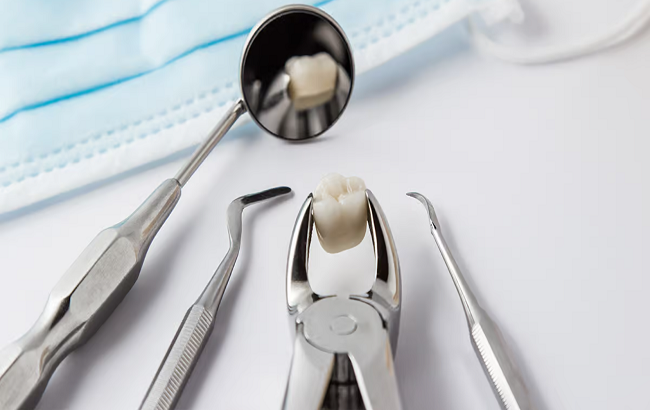Understanding a normal socket after tooth extraction can significantly ease your post-procedure anxiety. While tooth extraction is a common dental practice, many people feel unprepared for the healing phase. Let’s uncover seven surprising truths about what’s considered a normal recovery process and how to care for your oral health.
1. What Is a Normal Socket After Tooth Extraction?
After a tooth extraction, the empty space where the tooth once was is called a socket. In a healthy healing process, this socket is filled with a blood clot, which acts as a natural bandage to protect the underlying bone and nerves.
Signs of a Normal Socket:
- The presence of a dark red or dark brown clot at the site.
- Minimal swelling or tenderness in the surrounding gums.
- Gradual reduction in discomfort over several days.
If you notice consistent improvement and no severe pain or foul odor, it’s a strong sign of normal healing.
2. The Blood Clot Is Your Mouth’s Best Friend
The blood clot in the socket is more than just a natural process—it’s a protective shield. This clot prevents:
- Infection: By sealing off the exposed bone and tissue.
- Excessive bleeding: It helps stabilize the area immediately post-surgery.
- Dry socket: A painful condition caused by premature clot loss.
Pro Tip: Avoid rinsing your mouth forcefully, using a straw, or smoking during the first 24–48 hours to keep the clot intact.
3. Complications Can Happen—Know the Warning Signs
While most extractions heal without issues, complications can occur. Recognizing the early signs can prevent more serious problems.
When to Call Your Dentist:
- Persistent or increasing pain beyond 48 hours.
- Foul odor or taste coming from the extraction site.
- Bleeding that doesn’t subside after applying pressure for 15–20 minutes.
- Visible bone or absence of a blood clot in the socket.
These signs might indicate dry socket, infection, or another issue that requires prompt attention.
4. Dry Socket Isn’t Always Your Fault
You might assume that dry socket occurs only due to poor oral care, but that’s not entirely true. External factors can increase your risk:
- Smoking: Nicotine reduces blood flow, delaying healing.
- Hormonal changes: Women taking hormonal contraceptives may be more prone.
- Excessive activity: Vigorous exercise can disturb the blood clot.
By being aware of these risk factors, you can take extra precautions during your recovery.
5. Pain Levels Vary—What’s Normal?
Pain is an expected part of recovery, but it should be manageable and decrease over time. A normal socket after tooth extraction may feel tender or sore, especially in the first 2–3 days.
Ways to Manage Post-Extraction Pain:
- Use over-the-counter pain relievers like ibuprofen or acetaminophen.
- Apply a cold compress to reduce swelling during the first 24 hours.
- Switch to warm saltwater rinses after 48 hours to promote healing.
If the pain intensifies or radiates to your ear or jaw, it could signal a complication requiring medical attention.
6. Healing Timelines: Everyone’s Journey Is Different
Recovery times can vary based on factors like the complexity of the extraction, your age, and overall health. Generally:
- Soft tissue begins to close in 7–10 days.
- Complete socket healing, including bone regeneration, can take several weeks or months.
Tips for Speeding Up Recovery:
- Rest adequately and avoid strenuous activities for the first 48 hours.
- Stick to a soft-food diet (e.g., soups, mashed potatoes, yogurt).
- Stay hydrated but avoid drinking through a straw.
7. Holistic and Natural Healing Options
If you’re open to natural remedies, these methods can complement your dentist’s instructions:
- Saltwater rinses: A gentle rinse (starting 24 hours after surgery) reduces bacteria and inflammation.
- Clove oil: Apply sparingly for its anti-inflammatory and analgesic effects.
- Hydration: Keep your mouth and body hydrated to encourage tissue repair.
Holistic approaches work best as supplementary strategies. Always follow professional advice to avoid unintended complications.
Key Differences Between Dry Socket and Normal Socket
Understanding how a normal socket differs from a dry socket helps you know when to act.
| Feature | Normal Socket | Dry Socket |
|---|---|---|
| Blood clot | Present and intact | Missing or dissolved |
| Pain | Mild and improves over time | Severe and throbbing |
| Appearance | Dark red/brown clot visible | Bone exposed, no clot visible |
| Odor | None or mild | Foul smell and bad taste |
FAQs About Normal Socket After Tooth Extraction
Q: How long does a normal socket take to heal?
A: Most people recover within 7–10 days, but full bone healing may take months.
Q: Can I brush my teeth after an extraction?
A: Yes, but avoid the extraction site for the first few days. Use a soft-bristled toothbrush.
Q: Is bleeding normal after tooth extraction?
A: Light bleeding for the first 24 hours is normal. Persistent bleeding needs attention.
The Role of Comfort in Healing
Post-extraction care doesn’t end with oral hygiene. Your overall well-being, including rest, matters greatly. If you’re recovering, investing in the right mattress can aid in faster recovery and better sleep. For example, the Best Mattress for Side Sleepers provides optimal comfort during healing, especially if you’re resting more than usual.
What does a normal socket look like after tooth extraction
After a tooth extraction, a normal socket after tooth extraction typically forms a blood clot, which helps protect the bone and nerves underneath. The socket should look like a shallow hole with a dark clot inside, signifying initial healing. Over time, this clot will gradually turn into new tissue, and the socket should begin to close up. If the blood clot remains intact, healing progresses smoothly, and you can expect minimal discomfort. However, improper care might lead to complications like dry sockets.
How to care for a tooth socket after extraction
Proper care of a normal socket after tooth extraction is vital for successful recovery. After the extraction, it’s crucial to avoid disturbing the blood clot that forms within the socket. This involves avoiding smoking, sucking through straws, or vigorous spitting. Gently rinsing your mouth with saltwater can help keep the area clean without dislodging the clot. Maintaining a soft-food diet and taking pain medication as prescribed by your dentist will also aid the healing process.
Normal healing timeline for tooth extraction socket
The normal socket after tooth extraction goes through several stages of healing, typically lasting between 2 to 4 weeks for initial recovery. In the first few days, the formation of a blood clot in the socket protects the bone and nerves beneath it. Over the next week, the swelling should reduce, and the pain becomes manageable. By the second week, the clot starts to harden into tissue, and the socket begins to close. The complete healing of the normal socket after tooth extraction can take up to a few months.
Signs of infection after tooth extraction
While most of the healing process for a normal socket after tooth extraction is smooth, an infection can cause complications. Signs of infection include excessive swelling, increased pain, foul taste or smell, and the presence of pus. If these symptoms occur, it’s important to consult a dentist immediately to prevent further damage. A healthy socket after extraction should not show signs of infection, and any unusual changes should be monitored closely.
What to do if blood clot dislodges after extraction
If the blood clot is dislodged from the normal socket after tooth extraction, it can lead to a painful condition called dry socket. The first step is to avoid disturbing the area by refraining from smoking, drinking through a straw, or forcefully spitting. If you suspect a dislodged clot, contact your dentist immediately for treatment. Your dentist may clean the socket and place a medicated dressing to promote healing and alleviate pain.
Socket healing tips to avoid dry socket
Dry socket is a painful condition that can occur when the normal socket after tooth extraction doesn’t heal properly. To avoid dry socket, it’s essential to follow aftercare instructions carefully. This includes avoiding actions that could dislodge the blood clot, such as smoking, sucking through a straw, or drinking hot liquids. You should also refrain from touching the extraction site with your fingers or tongue. Keeping the area clean with warm saltwater rinses can also help promote healing. Proper care of the normal socket after tooth extraction can significantly reduce the risk of dry socket. For more detailed tips, visit Medical News Today.
Soft foods to eat after tooth extraction
Eating the right foods after a tooth extraction is essential for maintaining the normal socket after tooth extraction and promoting healing. Opt for soft foods such as mashed potatoes, scrambled eggs, and smoothies that don’t require chewing. Avoid hot, spicy, or crunchy foods that could irritate the socket or cause discomfort. Cold foods, such as ice cream or yogurt, can help reduce swelling and soothe the area.
Can you drink through a straw after tooth extraction
Drinking through a straw after tooth extraction is discouraged as it can disturb the normal socket after tooth extraction. The suction created by using a straw may dislodge the blood clot that forms within the socket, leading to dry socket, a painful condition. It’s best to avoid using straws for at least a few days after the extraction.
How to clean a tooth extraction socket safely
Keeping the normal socket after tooth extraction clean is crucial for preventing infections. However, you must clean it carefully to avoid dislodging the blood clot. Start by gently rinsing your mouth with a saltwater solution after meals to remove any food particles. You can also use an antibacterial mouthwash as recommended by your dentist. Avoid brushing directly on the extraction site for a few days to prevent disturbing the clot. Maintaining good oral hygiene while taking care of the normal socket after tooth extraction is essential for healing. For more cleaning tips, check out Dental Land.
Final Thoughts
The recovery process after a tooth extraction doesn’t have to be intimidating. A normal socket after tooth extraction is part of a natural and predictable healing process. By understanding the stages of healing, following aftercare instructions, and watching for warning signs, you can ensure a smooth and complication-free recovery.
Remember, every individual heals differently. Stay patient, practice good oral hygiene, and prioritize your overall comfort during this time. If you notice anything unusual, don’t hesitate to reach out to your dentist for guidance.
You May Also Like:





